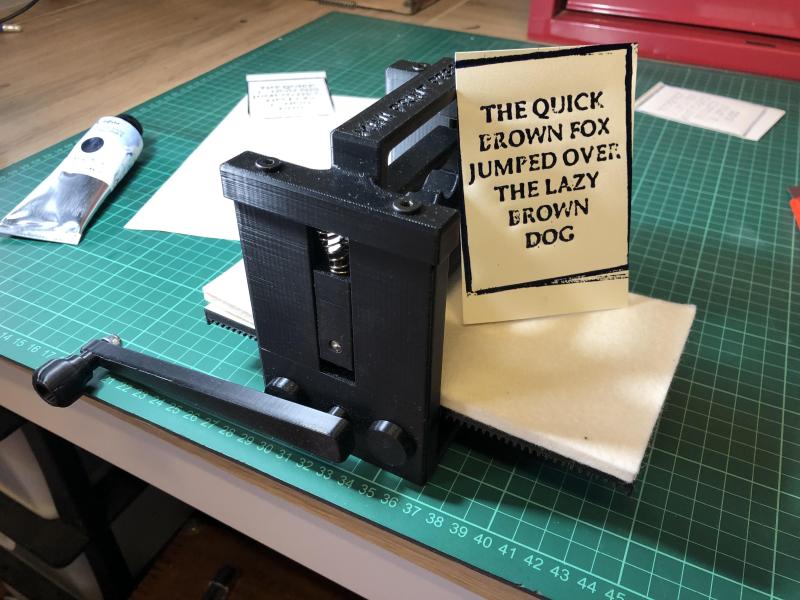Making stamps out of potatoes that have been cut in half is always a fun activity with the kids. But if you’ve got a 3D printer, you could really step up your printing game by building a mini relief printing press.
To create the gear bed/rack, [Kevr102] used a Fusion 360 add-in called GF Gear Generator. At first this was the most finicky part of the process, but then it was time to design the roller gears. However, [Kevr102] got through it with some clever thinking and a little bit of good, old-fashioned eyeballing.
Per [Kevr102], this press is aimed at the younger generation of printers in that the roller mechanism is spring-loaded to avoid pinched fingers. [Kevr102] 3D-printed some of the printing tablets, which is a cool idea. Unfortunately it doesn’t work that well for some styles of text, but most things came out looking great. You could always use a regular linocut linoleum tile, too.
This isn’t the first 3D-printed printing press to grace these pages. Here’s one that works like a giant rubber stamp.
















The dog is brown too eh? Don’t think that’s in the original pangram, since you’ve already used all those letters once
Also there’s no S represented because it’s “jumps” not “jumped”
https://davelab6.github.io/pangrams/
So glad someone saved this (it was deleted from Wikipedia as “not encyclopedic”/”original work” but it’s one of my favorite wiki pages).
Alternately, the S is in “dogs” instead of “dog”.
https://en.wikipedia.org/wiki/The_quick_brown_fox_jumps_over_the_lazy_dog
Having come down to say this myself, I am greatly amused to come this to be the only topic being discussed XD
I used that sequence in 1970’s to test TTY and similar devices and ALL letters and numbers had to be present at least once: “The quick brown fox jumps over the lazy dog 01234567890”
I know it’s mainly for fun, and aiming to illustrate letterpress printing, but I wonder if some version of offset printing wouldn’t work better, particularly for type.
Letterpress specifically needs hard, flat surfaces and a fair bit of pressure, but printed forms will have a rough top layer, which means dropouts, blotchiness, or both (depending how much ink you use).
If you print onto a rubber sheet and then press that onto the page, you don’t need much pressure at either step, and it might be more forgiving about surface roughness. Plus, the forms for offset printing don’t need to be mirrored, which helps with proofreading and handmade forms.
There is also the Open Press Project https://openpressproject.com/, which started as a PhD project, if I remember correctly.
This is focused on intaglio printing (etchings) though, which is sorry if the opposite of relief printing being done here. I see they’ve moved on to using metal rollers, the one I printed 3 it so years ago had printed rollers too, which aren’t ideal but get the job done.